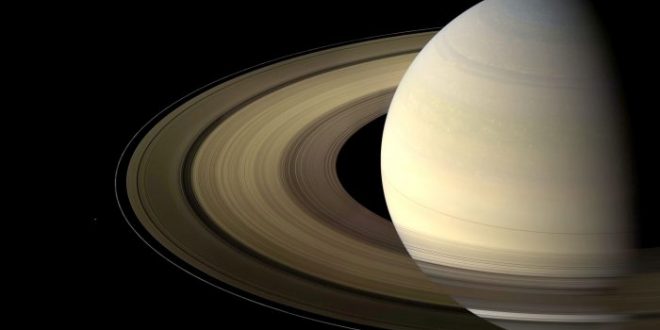Saturn has rings that are fascinating to many people. Of all the planets in the solar system that has rings, Saturn’s rings are the most visible and easily the most famous of them all. People would soon see a close-up view of those rings, as Cassini is preparing to fly near Saturn’s rings as its mission nears its end.
On November 30, Cassini will begin a phase of the mission that the science team calls “Cassini’s Ring-Grazing Orbits,” as the spacecraft will start skimming past the outer edge of the rings, coming within – at times — 4,850 miles (7,800 kilometers) of the rings.
“We’re calling this phase of the mission Cassini’s Ring-Grazing Orbits, because we’ll be skimming past the outer edge of the rings,” Linda Spilker, Cassini project scientist at NASA’s Jet Propulsion Laboratory, Pasadena, California, said in a statement. “In addition, we have two instruments that can sample particles and gases as we cross the ringplane, so in a sense Cassini is also ‘grazing’ on the rings.”
Saturn’s rings, first observed by Galileo in 1610, are made mostly of water-ice granules. The planet has four main ring systems, named alphabetically in the order they were discovered — A,B,C and D — and several other, much fainter rings that lie farther from the planet.
During the upcoming ring-grazing maneuvers, which will take place between Nov. 30 and April 22, the spacecraft will circle high above the poles of the gas giant and dive through the unexplored regions of the outer edges of its main rings 20 times. The ring crossings in March and April will send the spacecraft through the dusty outer reaches of the F ring, which is roughly 500 miles wide.
“On many of these passes, Cassini’s instruments will attempt to directly sample ring particles and molecules of faint gases that are found close to the ring. During the first two orbits, the spacecraft will pass directly through an extremely faint ring produced by tiny meteors striking the two small moons Janus and Epimetheus,” NASA explained in the statement. “Grazing the edges of the rings also will provide some of the closest-ever studies of the outer portions of Saturn’s main rings. Some of Cassini’s views will have a level of detail not seen since the spacecraft glided just above them during its arrival in 2004.”
Once these ring-grazing experiments are done, Cassini will begin its “grand finale,” during which it will pass just over 1,000 miles above the thick clouds that enshroud Saturn. This would then be followed by a fatal plunge through the planet’s atmosphere on Sept. 15 — a move that NASA said is needed to protect Saturn’s potentially habitable moons.
Agencies/Canadajournal

 Canada Journal – News of the World Articles and videos to bring you the biggest Canadian news stories from across the country every day
Canada Journal – News of the World Articles and videos to bring you the biggest Canadian news stories from across the country every day

